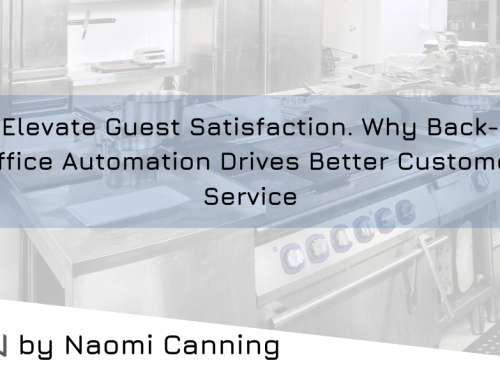Embracing digital payment methods has become vital for businesses seeking efficiency and innovation. In this blog post, we will explore 5 proven strategies to help your vendors adopt digital payments – a win-win scenario that can streamline their transactions and improve your cash flow management.
We’ll delve into the benefits of digital payment solutions, address common concerns, and share real-life success stories to demonstrate how these strategies can revolutionize vendor relationships.
Key Takeaways
- Embracing digital payments can bring numerous benefits for vendors, including faster payment processing, reduced transaction fees, enhanced security, streamlined operations, and improved customer convenience.
- To encourage vendor adoption of digital payments, businesses should educate vendors on the benefits and process of digital payments while also addressing common concerns about security and delays in receiving funds. Offering incentives like discounts or rebates can also help increase adoption rates.
- Providing flexible payment options that cater to vendor needs and enhancing security measures are crucial steps towards successful implementation of digital payment solutions. Streamlining payment processes through automation and online portals can make the transition smoother while improving cash flow management for both parties.
Understanding Digital Payments For Vendors
Digital payments provide numerous benefits for vendors including faster payment processing, increased security, and improved cash flow management.
Benefits Of Digital Payments For Vendors
Embracing digital payments can bring a multitude of advantages for vendors, which ultimately lead to improved efficiency, increased revenue, and enhanced customer satisfaction. Some of the key benefits of digital payments for vendors include:
- Faster payment processing: Digital payments are processed instantly, allowing vendors to access funds more quickly and improve cash flow management.
- Reduced transaction fees: Many digital payment methods have lower fees compared to traditional methods like checks or wire transfers, saving vendors money on each transaction.
- Enhanced security: Digital payment solutions usually come with built-in security measures such as encryption and fraud detection, helping protect both the vendor and their customers from potential risks.
- Streamlined operations: With automated systems in place, digital payments reduce manual tasks and paperwork associated with handling traditional forms of payment.
- Improved customer convenience: Offering a variety of digital payment options caters to different customer preferences, resulting in a better buying experience and potentially increased sales.
- Better record-keeping: Integrating digital payments with accounting software allows vendors to easily track transactions and stay organized for tax purposes or financial reporting.
- Eco-friendliness: By reducing paper usage associated with checks or invoices, vendors can contribute to environmental sustainability efforts while also cutting costs related to printing and mailing expenses.
- Increased competitiveness: Adopting digital payment methods helps vendors stay current with technology trends and keep pace with competitors in their industry that may have already implemented similar solutions.
By incorporating digital payments into their business processes, vendors can enjoy these benefits while also providing a seamless transaction experience for their customers.
Addressing Common Concerns With Digital Payments For Vendors
One common concern among vendors when it comes to digital payments is the security of their financial information. They may worry about hacks or breaches that could compromise their sensitive data.
It’s important for businesses to address this concern by implementing robust security measures and educating vendors on the steps they are taking to protect their information.
Another concern that some vendors may have with digital payments is the potential for delays in receiving funds. Businesses can alleviate this concern by offering multiple payment options and ensuring timely processing of payments.
Overall, addressing these common concerns shows a commitment to vendor satisfaction and can lead to increased adoption of digital payment methods within your business network.
Identifying Vendors Who Are Good Candidates For Digital Payments
Before trying to implement digital payment methods, it’s important for businesses to identify which vendors would be good candidates for the transition. Vendors who frequently invoice or receive payments are typically the best fit for digital payments.
It’s also important to consider whether a vendor is currently experiencing any pain points related to traditional payment methods, such as delayed payments or difficulty tracking invoices.
These are signs that a vendor may be open to exploring alternative payment options. For example, if a vendor has expressed frustration with slow processing times associated with check-based payments in past discussions, this could indicate interest in faster and more efficient electronic payments.
Overcoming Obstacles To Vendor Adoption
Educate vendors on the benefits and process of digital payments, provide incentives to encourage adoption, offer flexible payment methods, enhance security measures, and streamline payment processes.
Educating Vendors On The Benefits And Process Of Digital Payments
To effectively promote and encourage vendor adoption of digital payments, it is important to educate vendors on the benefits and process of digital payments. Here are some ways to do this:
- Explain the benefits: In order to convince vendors to switch to digital payments, it’s important that they understand the benefits. Emphasize how digital payments can save time, reduce errors and fraud, improve cash flow, and provide increased security for both parties.
- Provide examples: Share success stories from other vendors who have already made the switch to digital payments. Additionally, highlight any data or statistics that demonstrate how digital payment solutions have positively impacted other businesses in similar industries.
- Walk through the process: Vendors may be hesitant about switching to digital payments because they are unfamiliar with the process. Providing a step-by-step guide on how digital payments work can help ease their concerns.
- Offer training and support: Some vendors may need additional training or support during the transition to digital payments. Offering these resources can help increase vendor adoption and ensure a smoother transition overall.
- Address concerns: It’s important to address any concerns or questions vendors may have about switching to digital payments. Common concerns may include security risks, cost, complexity of using new systems, etc. Addressing these concerns head-on can help build trust with vendors and encourage them to make the switch.
By educating vendors on the benefits and process of digital payments, businesses can increase vendor adoption rates and reap all of the associated benefits of this modern payment method.
Providing Incentives To Encourage Adoption
One effective way to encourage vendors to adopt digital payments is by providing incentives. These can come in various forms, such as discounts for early adoption, rebates on transaction fees, or even exclusive offers for businesses that consistently use electronic payment methods.
Incentives not only reward vendors who have already embraced digital payments but also create a sense of urgency and excitement among those who may still be hesitant.
For example, a small business owner could offer regular suppliers a 2% discount on purchases if they opt-in for automatic recurring online payments through their preferred platform.
This incentive will help encourage prompt payment processing while helping the vendor save money in transaction costs throughout each billing period.
Offering Flexible Payment Methods
One effective strategy to encourage vendors to embrace digital payments is to offer flexible payment methods that cater to their specific needs. Here are some ways businesses can provide flexible payment options:
- Multiple Payment Gateways: Offer multiple payment gateways like credit/debit cards, net banking, and mobile wallets so vendors can choose the option that suits them the most.
- Invoice Financing: Some vendors may prefer invoice financing where they get paid for their invoices sooner rather than later. By offering this option, businesses may attract more vendors who need faster access to money.
- Customized Payment Plans: Providing customized payment plans can help vendors by accommodating their unique billing cycles and cash flow needs.
- Partial Payments: Offering partial payments could help in instances where vendors require partial payments based on milestones accomplished or deliverables achieved before the full payment is made.
- Automatic Payment Scheduling: Implementing an automatic payment scheduling system can ensure timely payments without requiring manual effort, which would be beneficial for vendors that have recurring charges or subscriptions.
Providing such flexible payment options demonstrates a commitment towards ensuring vendor convenience and satisfaction. Vendors will have more control over how they receive payments and businesses will benefit from enhanced relationships with their preferred suppliers.
Enhancing Security Measures
One major concern for vendors when it comes to digital payments is security. With the rise of cybercrime and data breaches, businesses must take necessary precautions to safeguard their financial information.
To enhance security measures, businesses can implement multi-factor authentication, encryption technologies, and fraud detection software.
It’s also essential to use reputable payment providers that comply with industry regulations and provide guarantees against fraudulent activities.
In addition to technological solutions, educating vendors on best practices for avoiding scams and phishing attacks is crucial in minimizing digital payment risks.
Streamlining Payment Processes
To help your vendors embrace digital payments, streamlining payment processes is crucial. The easier the payment process is, the more likely your vendors are to adopt it.
One way to streamline the process is by using an online portal that allows for easy invoicing and payment tracking. You can also automate payments to ensure prompt and consistent disbursements while reducing manual processing time.
For example, Company B successfully streamlined their payment processes by simplifying their invoicing system and offering multiple payment options. They implemented a cloud-based financial management software that provided dashboards for vendor management and facilitated approvals in real-time.
With these changes, they reduced processing time from 5 days per invoice to just 3 days while improving accuracy rates by over 90%.
Best Practices For Implementing Digital Payments
Choose a reliable payment provider and integrate it with accounting software to ensure seamless transactions and financial record-keeping.
Choosing The Right Payment Provider
Choosing the right payment provider is crucial to implementing successful digital payments. Here are some tips for selecting the right payment provider:
- Evaluate your business needs and goals to determine the features required in a payment provider.
- Look for a payment provider that offers secure, reliable, and scalable solutions.
- Check for accreditation and certifications to ensure compliance with regulatory requirements.
- Consider the fees and pricing model of the payment provider, including any hidden fees or additional costs.
- Research customer support options to ensure timely resolution of issues or concerns.
By selecting a payment provider that meets your business needs and provides a reliable and secure service, you can streamline your payment processes and improve cash flow management while ensuring compliance with regulations.
Integrating With Accounting Software
Integrating digital payment systems with your accounting software can significantly improve the efficiency of your payment processes. With this integration, you can easily keep track of payments and expenses while ensuring complete accuracy in bookkeeping.
This means less time spent on manual data entry and more time for other important business tasks. Additionally, integrating with accounting software allows for seamless reconciliation of payments, making it much easier to spot errors or discrepancies.
Real-life examples show just how beneficial this integration can be. For instance, Company B used an automated solution that integrated their digital payment system directly into their existing QuickBooks account.
Ensuring Compliance With Regulations
Compliance with regulations is crucial for any company offering digital payments to their vendors. Companies must ensure they comply with data security standards, anti-money laundering laws, and other regulatory requirements set by the government.
Fortunately, businesses can implement various measures to mitigate risks of non-compliance through ongoing training and education on regulatory changes as well as ensuring internal processes meet required compliance standards.
By understanding these key regulations and working with a trusted payment provider that has experience in these areas, companies can ensure that they remain legally compliant while also embracing the benefits of digital payments in terms of innovation and efficiency.
Regularly Reviewing And Evaluating Processes
Regularly reviewing and evaluating your digital payment processes is crucial to ensure that they are meeting the needs of your vendors and helping your business run smoothly.
By regularly reviewing these processes, you can identify areas where improvements can be made and make any necessary changes to ensure that you are providing the best possible payment experience for both yourself and your vendors.
Implementing updates to improve speed, accuracy or user-friendliness could help save time in accounting duties which frees up valuable resources to focus on other tasks.
For instance, Company A was able to reduce transaction fees by over 50% by switching from checks to virtual cards through regularly monitoring their payment system usage patterns.
Real-Life Success Stories
Discover how companies like Company A, which incentivized adoption; Company B, which simplified the process; and Company C, which provided extensive training and support achieved success in digital payment implementation.
Case Studies Of Companies Successfully Using Digital Payment Strategies
| Company | Strategy Used | Results |
| Company A: Incentivizing Adoption | Offered discounts and rewards to vendors who switched to digital payments, specifically using virtual cards for transactions. | Significant reduction in average cost per supplier payment and increased rebate collection through the use of virtual cards. |
| Company B: Simplifying the Process | Integrated digital payment systems with their accounting software, streamlining payment processes and reducing transaction fees. | Instant processing of B2B digital payments, improved cash flow, and enhanced overall efficiency for the business and its vendors. |
| Company C: Providing Training and Support | Offered comprehensive training and ongoing support to vendors, addressing concerns and ensuring understanding of digital payment processes and associated security measures. | Increased vendor confidence in digital payment adoption and a significant decrease in fraud attempts and security risks. |
Company A: Incentivizing Adoption
One effective way to encourage vendor adoption of digital payments is through incentives. Company A, for example, implemented a program where vendors who switched to digital payments received discounted rates on their services.
Other potential incentives could include offering preferred vendor status or early payment discounts. It’s important to tailor these incentives based on each vendor’s specific needs and concerns.
Company B: Simplifying The Process
One effective strategy for helping vendors embrace digital payments is simplifying the payment process. Company B, for instance, realized that their success hinged on getting vendors to adopt electronic payments but found many of them hesitant due to perceived complexities.
To address this challenge, they simplified their entire payment process and made it more user-friendly. They removed unnecessary steps in the registration process, provided simple tutorials on how to use their preferred digital payment methods, and offered round-the-clock support services to help vendors navigate any issues.
As a result of these efforts, Company B was able to increase vendor adoption rates significantly while streamlining payment processing time and boosting overall efficiency.
Company C: Providing Training And Support
One effective strategy for helping vendors embrace digital payments is by providing them with adequate training and support. Often, vendors may be hesitant to adopt new payment methods due to their lack of knowledge about how it works or fear of making mistakes.
Companies can overcome this obstacle by offering comprehensive training sessions on how to use the payment platform and addressing any concerns the vendor might have.
For example, Company C successfully implemented digital payments by providing their vendors with one-on-one training sessions and creating tutorials and documentation explaining the payment process step-by-step.
They also offered a dedicated help desk for any questions or technical issues that arose during implementation.
Conclusion: The Future Of Digital Payments And Vendor Acceptance
In conclusion, by using these 5 proven strategies to help vendors embrace digital payments, businesses can enhance payment experiences and streamline their cash flow management.
With the rise in popularity of online credit card payments, digital wallets, and mobile payment options, it is essential for companies to adapt to these innovative payment methods.
By choosing a reliable payment provider, integrating with accounting software, ensuring compliance with regulations, and offering incentives for adoption and training/support measures; companies can successfully implement digital payments while also enhancing security measures.
FAQs:
- What are digital payments and why are they important for vendors to embrace?
Digital payments refer to using electronic methods such as credit cards, mobile wallets or online transfers to complete transactions instead of physical cash. Embracing digital payments can help vendors reduce the risk of fraud, increase efficiency in payment processing and provide a better experience for customers who prefer these methods over traditional payment options.
- What strategies can businesses use to encourage their vendors to adopt digital payment methods?
Strategies that businesses can implement include providing education on the benefits of digital payments, incentivizing adoption through discounts or rewards programs, offering training sessions on how to use new systems and ensuring that all necessary hardware is installed properly.
- How long does it typically take for vendors to adapt to new digital payment systems?
The time it takes varies depending upon factors such as the vendor’s comfort level with technology, their existing infrastructure and processes, and overall readiness for change within their organizations. It may also take some time before all customers become comfortable with newer forms of payment – however once adoption rates grow these types of transitions should become easier thanks in part due consumer familiarity & demand towards faster/safer transactions.
- Are there any potential risks associated with adopting digital payment systems?
There are always risks involved when making changes but most times you will find these outweighed by benefits gained from streamlining processes including saving time/money while minimizing errors through automation/real-time updates . Some common concerns regarding security may be addressed through encryption protocols designed protect sensitive information transmitted during transactions but care must taken ensure both vendor/partner have established policies/guidelines implemented minimize data breaches/hacking attempts etc.
General Facts
- The article provides 5 proven strategies to help vendors embrace digital payments.
- The strategies involve segmenting vendors into different categories such as “likely to adopt,” “hesitant,” and “really hesitant,” and developing tailored approaches for each category.
- The article emphasizes the importance of determining who to talk to within the vendor organization to effectively promote digital payments.
- Digital payments and underlying payment systems can help reduce potential human errors and fraud associated with policy claims disbursed via traditional payment methods in the insurance industry.
- Digital payment solutions can significantly lower the average cost per supplier payment and even provide rebates through the use of virtual cards.
- B2B digital payments process instantly, reduce transaction fees, provide increased security, improve cash flow, and enhance overall efficiency for small businesses.
- With the rise of digital payments, it is important for suppliers to feel secure and for businesses to be aware of fraud attempts and security risks.
- Accepting online credit card payments, utilizing internet banking, accepting digital wallet payments and QR codes, and leveraging mobile payment options are some of the ways companies can embrace digital payments.
- The article suggests that improving digital payments can lead to benefits such as enhanced payment experiences, innovative payment methods, and suggestions for e-wallet usage.
- The article mentions related searches such as suggestions to improve digital payments, promoting digital payments, improving electronic payments research papers, innovative payment methods, electronic payment systems, and suggestions for e-wallets.
Source URLs
https://www.forbes.com/sites/forbestechcouncil/2022/01/05/13-effective-ways-to-improve-and-expand-digital-payment-methods/
https://www.fisglobal.com/en/insights/what-we-know/2021/january/five-reasons-insurance-companies-should-embrace-digital-payments-now
https://www.highradius.com/resources/Blog/smb-digital-payments/
https://www.versapay.com/resources/smart-payments-the-solution-to-your-cash-application-challenges
https://www.businesswire.com/news/home/20220308005585/en/5-Ways-Companies-Can-Leverage-Digital-Payment-to-Boost-Their-Business-in-a-Post-Covid-Environment-I-Digital-Banking-Firm-DNBC





